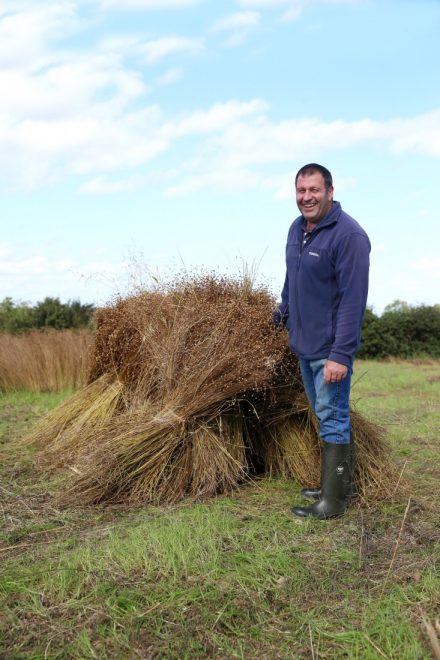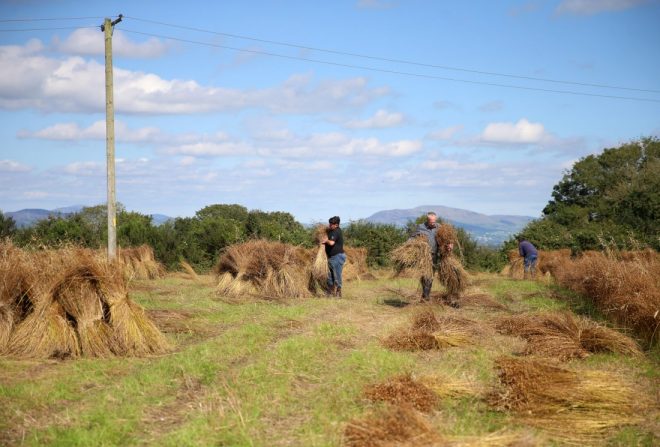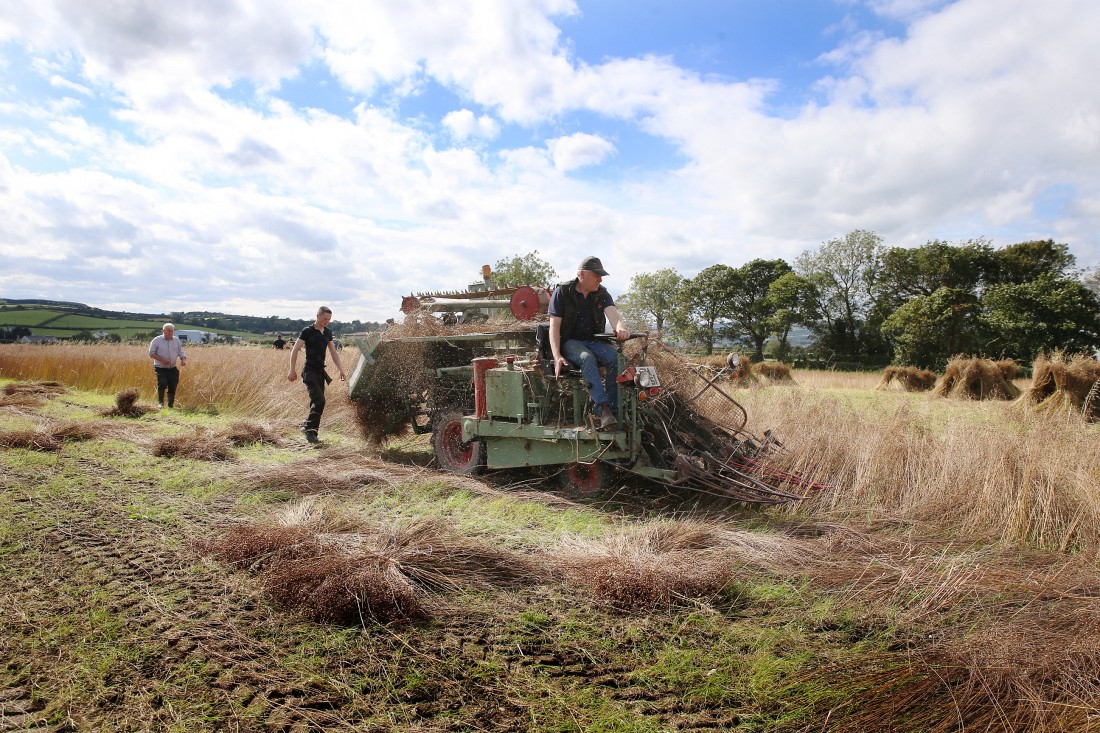
THE restoration of thatched cottages on the Wild Atlantic Way in recent years has led to a resurgence in the ancient craft of thatching and the harvesting and preparation of the materials in Donegal.
Master thatcher, Ivor Kilpatrick, from Raphoe is following in the footsteps of his father, Billy. He has also introduced his son, James, to the family business and grows his own thatching materials of rye, flax and wheat.
Earlier this week he took time out from his busy schedule collecting harvested flax at Drumbarnett, Manorcunningham, to speak to the Donegal News about the methods and materials used in thatching.
“Whoever came up with the Wild Atlantic Way deserves not only one medal, but two,” he quipped.
The neat stooks of golden harvested crops have been catching the eye of motorists passing through Manorcunningham on the main Letterkenny to Derry road in recent weeks. It is just part of the 40 acres that Ivor sows every year on the farm of his son-in-law.
“We would have been harvesting last week only for the weather but we might be lucky enough to get a get or two at it this week. We grow our own material for roofing because we wouldn’t be able to source it otherwise. It’s keeping us in a job.
“We have to take off thatching work for the harvest which is very important for us. If we don’t get the crop in we don’t have the material to do our work next year,” he explained.
“The flax is cut, tied and stooked in the field to ripen. Then, it is taken to our store where it is kept to be used in next year’s thatching. It’s a long, slow process,” he added.
More and more traditional cottages are being completely revamped in sympathy with their original style, re-thatching the roof and installing oil-fired central heating.
“There’s always cottages to be repaired plus there’s a Government grant available to keep them thatched and that’s the work we’re doing,” he said.
“A lot of traditional roofs are done with flax. Years ago it was used to make linen and then it went on the roof. It’s part of the heritage now,” he added.
The warmer lands of Manorcunningham are more suitable for growing rye and flax than those on his own farm near Raphoe. Ivor and James work within a 100 mile radius of their home and, currently, are working on a major project at the Ulster American Folk Park near Omagh.
“We work all over the north, across Donegal and into Sligo and Cavan too,” he said.
“The Wild Atlantic Way has really helped our business. People are now visiting places they would never have thought of before and many of these cottages are down narrow lanes and people are starting to let them out,” he added.
Thatching keeps the Kilpatricks busy twelve months of the year and they can be found on roofs most days unless it’s too wet of snowy.
“Each roof is different and can take three to four weeks to complete. They are have their own characteristics but you’ll find that they’re neither square nor parallel. It’s slow work,” he said.
Ivor said each part of the county has its own style of thatching, depending on the weather.
“In coastal areas, the thatch is more shallow and is applied more frequently using a ‘laying on’ style and covered by wire mesh,” he said.
“While in eastern and central Donegal, the thatch is applied to the roof in greater depth and scollops (made from sally rods) are used as pegs to hold it in place. In coastal areas, the roofs are more barrel
shaped to deflect the high winds and, inland, you’ll notice more apex thatched roofs. The type of thatching depends on the local climate and can last from between 12 and 18 years before it needs replacing.”
Anyone interested in having their house thatched can avail of Thatch Repair Grant Scheme which is administered by Donegal County Council.
The scheme provides advice to owners on the conservation of thatched roofs, allocates funding for small-scale thatch repairs and helps homeowners carry out necessary repairs under conservation supervision.
Advice on all of these grant schemes is available from the County Donegal Heritage Office and the Conservation Office of the council and on-line at www.donegalcoco.ie/heritage
Applications forms for the scheme are available on-line from the council website or by contacting Joseph Gallagher, Heritage Officer or Collette Beattie, Conservation Officer at (074) 915 3900 or by e-mail at thatch@donegalcoco.ie











